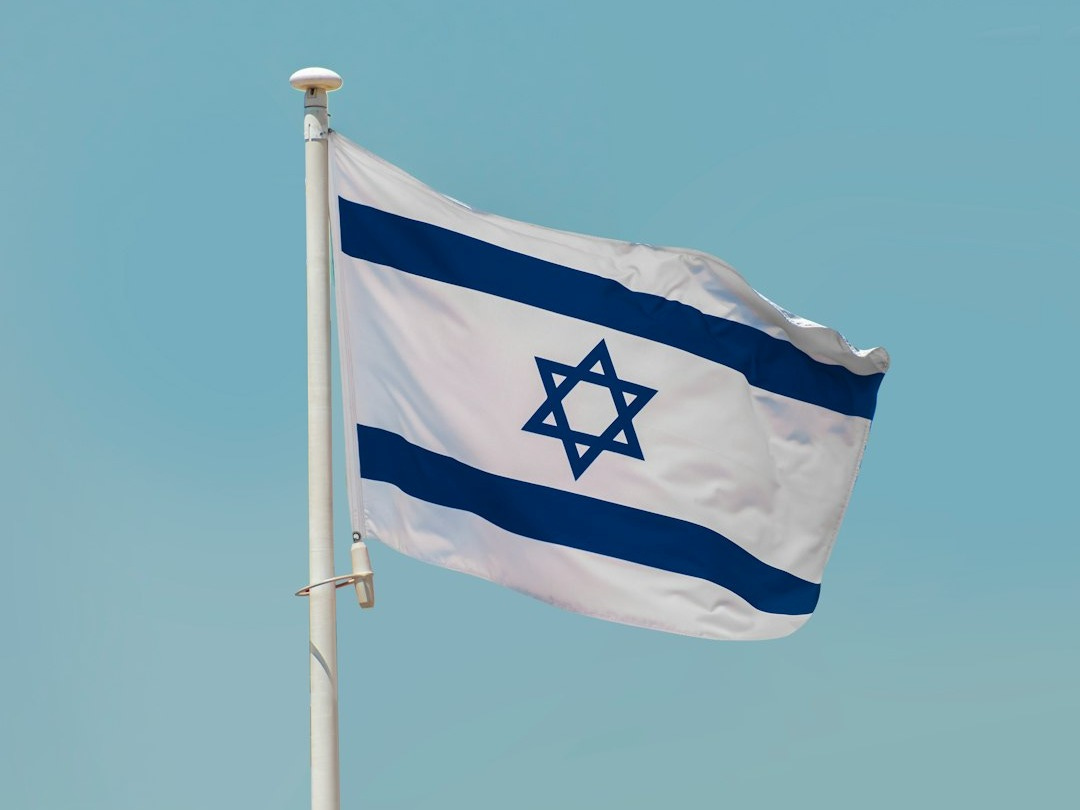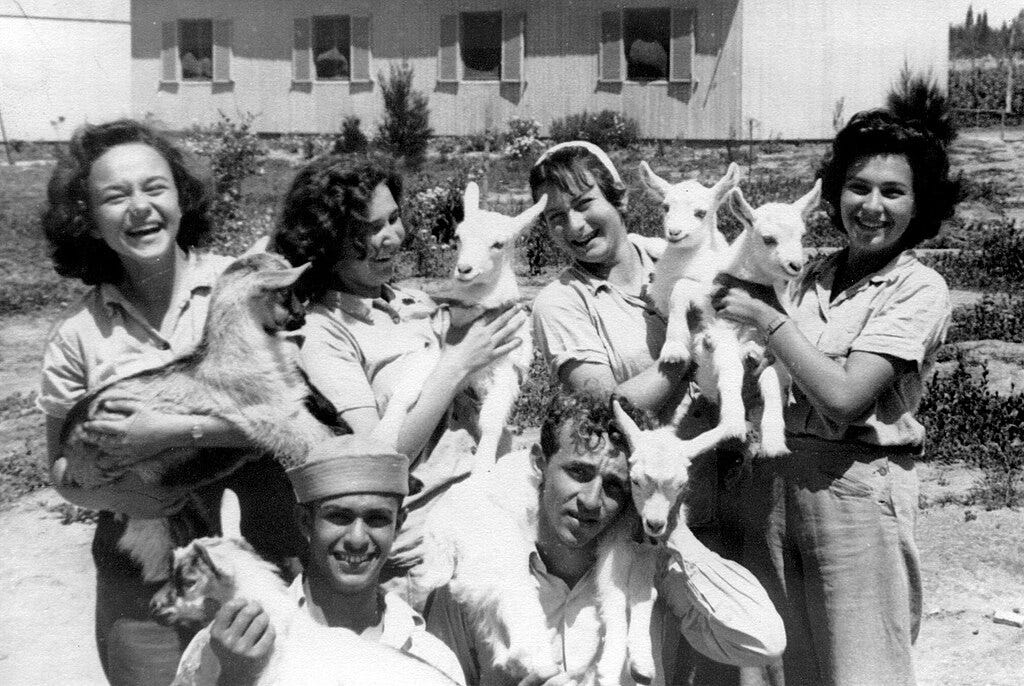The Unbreakable Link Between Zionism and Judaism
Zionism without Judaism is empty, while Judaism without Zionism is crippled.
Please consider supporting our mission to help everyone better understand and become smarter about the Jewish world. A gift of any amount helps keep our platform free of advertising and accessible to all.
You can also listen to the podcast version of this essay on Apple Podcasts, Google Podcasts, and Spotify.
Zionism and Judaism are often spoken of in the same breath (and for good reason), but just as often misunderstood.
Critics of Israel — the only country in the world that has “critics” — frequently claim that Zionism is a modern political ideology with little connection to Judaism, or that one can be a faithful Jew while rejecting Zionism altogether.
But such assertions flatten the deep historical, religious, and emotional link between the Jewish People and the Land of Israel. In truth, Zionism is not some foreign graft onto Judaism; it is a natural flowering of Jewish identity, continuity, and yearning.
To understand the connection between Zionism and Judaism, one must begin with the concept of Am Yisrael (the People of Israel). Judaism is not merely a set of beliefs; it is the lived culture, set of laws, moral code, and memory of a people.
Unlike Christianity or Islam, Judaism is not solely a faith-based identity, but a national one. This is evident in the Hebrew Bible, where the Jewish People are not only called to worship one God, but are bound together by a shared covenant, collective destiny, and a specific land: Eretz Yisrael (the Land of Israel).
The Land of Israel features in virtually every aspect of Jewish life. It is the setting for the vast majority of the Torah. It is the place where nearly all of the prophets walked. It is the direction Jews face when they pray, the dream behind every Passover Seder (“Next year in Jerusalem”), and the longing behind countless liturgical poems and prayers across centuries of exile.
In fact, the Torah mentions the Land of Israel hundreds of times; some scholars count more than 700 explicit references.
For 2,000 years, even as Jews were scattered across the globe after the fall of the Second Temple in Jerusalem in 70 AD, the centrality of Zion (an actual hill in Jerusalem that went on to symbolize the Land of Israel) never left Jewish consciousness.
Of course, the relationship between Judaism and the Land of Israel did evolve, especially after the destruction of the Second Temple. With the center of Jewish life physically destroyed and the people exiled, Judaism entered a new phase: one that had to survive without a nation, a priesthood, or a physical sanctuary.
Rabbinic Judaism emerged in this period, emphasizing portable practices like prayer, Torah study, and ethical law that could be lived in exile. In this sense, Judaism became more “spiritual” and less land-centered — not because the land was forgotten, but because it was out of reach.
The brilliance of the rabbinic response was its dual nature: It both adapted and preserved. Yes, Judaism became more focused on the synagogue than the Temple, on Diaspora community life rather than national sovereignty.
But it never let go of the dream of return. The liturgy remained filled with longing for Jerusalem. The Amidah prayer, recited three times daily, pleads for the rebuilding of the Temple and the ingathering of the exiles. Jewish marriage ceremonies end with the breaking of a glass to remember the destruction of Jerusalem. Even in its most diasporic moments, Judaism kept one eye on Zion.
So, while post-Temple Judaism was more globally dispersed and spiritually adaptable, it was never de-territorialized. The Land of Israel remained the gravitational center of Jewish identity, a spiritual north star even in physical absence.
Even then, Nachmanides (Ramban) moved to Jerusalem and tried to rebuild Jewish communal life there in the 13th century; Rabbi Yosef Karo and the mystics of Tzfat revived Jewish learning in the Galilee in the 16th century; and waves of immigration (Aliyah) from Yemen, Persia, and Eastern Europe occurred in the 1800s.
Zionism, then, is not a break from Judaism, but a modern expression of one of its oldest hopes: the return of the Jewish People to their ancestral homeland. What changed in the late 19th and early 20th centuries was not the desire for return — that had never disappeared — but the emergence of historical circumstances that made return possible.
The rise of nationalism in Europe, the persistence of violent and lethal antisemitism, and the growing secularization of Jewish communities combined to produce modern political Zionism, a movement that sought to normalize Jewish life by restoring Jewish sovereignty.
Theodor Herzl, often called the father of modern political Zionism, was not a religious man. Yet he drew from deeply Jewish instincts: to protect his people, to ensure their survival, and to root their identity in something unshakable.
Religious Jews, too, developed their own streams of Zionism, some seeing the return to Zion as a divine process, others focusing on the practical mitzvah (commandment) of settling the land. Though they disagreed on method and meaning, both secular and religious Zionists were drawing from the same ancient well: the covenantal bond between Jews and their homeland.
And yet, the emotional and spiritual foundations of Zionism predate the formal political movement by decades. Israel’s national anthem, Hatikvah (“The Hope”), is based on a poem written by Naftali Herz Imber in the 1870s — a full two decades before Herzl convened the First Zionist Congress. Its verses express the age-old longing of Jews to return to Zion: “As long as in the heart within, the Jewish soul yearns… our hope is not yet lost.”
That hope was not manufactured in a conference room. It was lived, sung, and carried in Jewish hearts long before Zionism had a name.
To that end, Israel’s first prime minister and one of its founding fathers, David Ben-Gurion, used to quote this scripture from the Book of Joel: “The old shall dream dreams, and the young shall see visions.”
This prophetic verse captures the essence of Zionism: the merging of ancient memory and youthful vision. It wasn’t just a national revival. It was spiritual alchemy, where prayers became passports and tears became blueprints.
One of the most astonishing achievements of Zionism (both symbolic and literal) was the revival of Hebrew. For centuries, Hebrew was a sacred language of prayer and study, not of street conversations or statecraft. But Zionism transformed it into a living, breathing modern language. This was not just linguistic innovation; it was cultural resurrection.
Today, Hebrew (Israel’s official language) is spoken by millions. With it came not only communication, but continuity — connecting modern Israelis directly to the words of the Torah, the Psalms, and the Prophets. No other nation in human history has brought a sacred language back to life and made it central to everyday life.
Even Israel’s flag is a testament to this ancient connection. Designed in the late 19th century by early Zionists, the flag deliberately resembles the tallit, the Jewish prayer shawl. The two blue stripes mirror those found on the tallit, and the Star of David in the center (long a symbol of Jewish identity) anchors the flag between heaven and earth.
The tallit is no mere garment. It is a commandment. In the Torah (Numbers 15:38), Jews are instructed to attach fringes (tzitzit) to the corners of their garments “so that you may look upon them and remember all the commandments of the Lord.” When a Jew wraps themselves in a tallit, they are quite literally cloaking themselves in memory, responsibility, and holiness. It is a daily act of spiritual identity and collective belonging.
So when the Israeli flag flies, it’s not just a national emblem. It’s a prayer in fabric. It declares: This land is not just where we live, it’s who we are.
There are, of course, Jews who reject Zionism, just as there are Jews who reject Torah observance. Jewish identity is wide, diverse, and even contradictory. But loud, singled-out fringe voices (whether ultra-Orthodox anti-Zionists or far-Left Jewish critics of Israel) cannot erase the fact that Zionism is a movement born out of Jewish experience and nourished by Jewish memory.
To suggest that Zionism is somehow “colonialism” is to erase thousands of years of Jewish connection to the land. No other people on earth has maintained such an unbroken link — through scripture, ritual, language, and longing — with a particular place. Zionism may have taken on the tools of modern statecraft, diplomacy, and defense, but its roots are ancient. The modern State of Israel is not a foreign entity imposed on a native people; it is the rebirth of a native people on its ancestral soil.
Even the name “Israel” speaks to the identity at the core of this entire story. In the Book of Genesis, Jacob wrestles with an angel and is renamed Israel, meaning “one who wrestles with God.” That struggle — with faith, with meaning, with destiny — is the essence of Judaism.
And it is also the essence of Zionism: a messy, courageous, stubborn return to history, to land, and to responsibility. To be a Jew is to wrestle with God. To be a Zionist is to wrestle with the burden and blessing of homecoming.
In the aftermath of the Holocaust and in the face of continued antisemitism, Zionism has proven to be not only a moral imperative, but a spiritual and civilizational necessity. It is the means by which Judaism defends its people, rejuvenates its culture, and reclaims its story. Without Zionism, Jewish destiny would remain in the hands of others. With it, the Jewish People write their own future.
Zionism is Judaism in motion. It is the Exodus reenacted in modern time. It is the Psalms made flesh. It is the tangible answer to millennia of whispered prayers and shattered hopes. It is, quite simply, home.
Paraphrased or echoed by figures like the late, great Rabbi Jonathan Sacks, David Ben-Gurion, and others in different wording, it has been said that Zionism without Judaism is empty, while Judaism without Zionism is crippled.
This concept captures the idea that Zionism without Judaism (that is, a purely secular, nationalist movement detached from Jewish spiritual and historical roots) loses its soul and meaning; Judaism without Zionism (that is, a Judaism that ignores the national, land-based, and peoplehood elements) lacks fullness, agency, and wholeness in the modern age.
Together, Judaism and Zionism form a living bridge between past and future, faith and nationhood, exile and return.
Zionism is not a break from tradition. It is tradition refusing to die. It is the ancient promise made fresh. It is Jews — still here, still arguing, still building, still praying, still wrestling — on the soil where it all began. It is not just the rebirth of a nation, but the reawakening of a people’s soul.
That is the link between Zionism and Judaism.
And it is unbreakable.





“Zionism without Judaism is empty.” Well said, but here endeth not the lesson. I submit that Humanity without Judaism is empty. Without the Jews, the world will have lost its guardians of the “Instruction Manual.” Without the Jews, the world will have lost its guiding light. Without the Jews, the Good Lord may conclude that there are no more righteous men (or women) living in Sodom and Gomorrah and “fffooomm”, gone in a flash. Move on to the next planet, start over, and wait another million years. As long as the Jews survive, we all survive.
You ARE a phenomenon. Mazel Tov. The Force IS with you. Hatzlacha. Toda rabah.